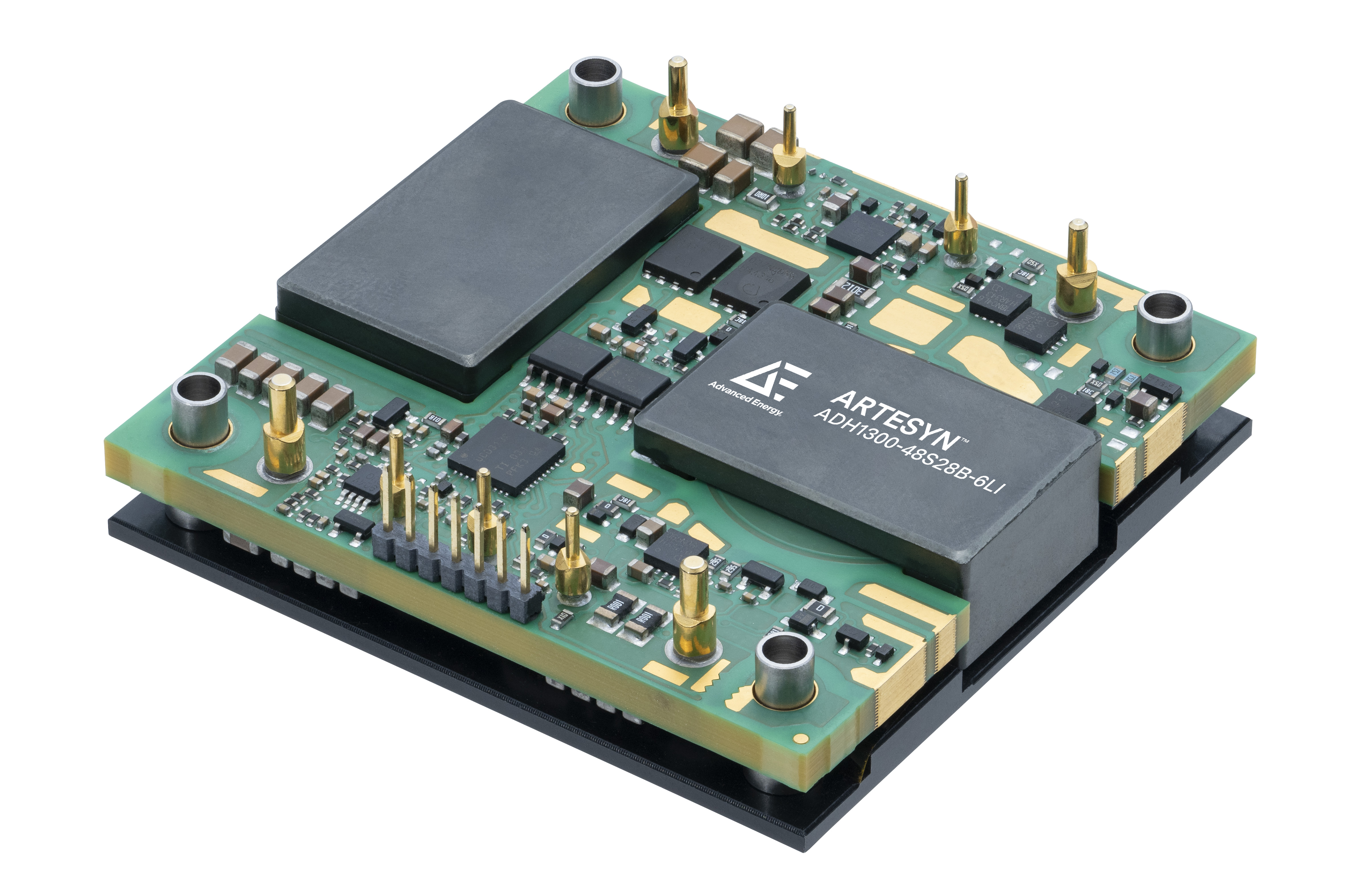Reducing RAN Running Costs with Advanced DC-DC Technologies
Veröffentlicht Oktober 08, 2024 von Andy Brown
Efficiency, reliability and remote monitoring reduce energy and maintenance expenses for telecom
Here are the key takeaways:
- Efficiency and Reliability: These are crucial for system architects and telecom operators when designing and deploying small cell wireless transmitters and receivers for 5G. Higher efficiency reduces energy costs, while reliability minimizes unplanned downtime and maintenance costs.
- Remote Radio Heads (RRHs): These are particularly inefficient, with power-in to power-out efficiencies ranging from 35 to 45%. The inefficiency mainly lies in the radio frequency power amplifier (RFPA).
- Massive MIMO Challenges: Next-generation “massive MIMO” active antenna unit (AAU) radios require multiple lower-power amplifiers. Linearizing these small amplifiers is costly and only marginally effective.
- Cost of Unreliability: Unplanned downtime and maintenance, such as a “truck roll” (service technician visit), can be extremely costly, often many times the cost of the failed component.
- DC-DC Converter Efficiency and Reliability: Designers focus on DC-DC converters for powering RFPA systems. High efficiency (95% or more) and high reliability (MTBF in millions of hours) are essential.
- Advanced Energy’s Solution: The Advanced Energy Artesyn® ADH1300-48S28 DC-DC converter offers 1,300 W power in a half-brick form factor, nearly 96% efficiency at full load, and a wide range of output voltage adjustment. It is thermally optimized for RRH equipment and supports extended reliable operation with an MTBF exceeding 1.5 million hours.
- Digital Monitoring and Control: The ADH1300-48S28 includes a PMBus interface for digital configuration, control and monitoring, which helps reduce maintenance costs and supports preventative maintenance by detecting power supply parameter fluctuations.
The reliability issue is a significant pain point because a so-called “truck roll” (a visit by a service technician to the base station to repair or replace a component, circuit board or other assembly) is a costly last resort that service providers want to avoid. Unplanned downtime and maintenance costs can mount very quickly, reaching many hundreds of times the cost of any specific part or system that has failed.
DC-DC Converter Efficiency and Reliability
Efficiency and reliability requirements directly impact a designer’s choice of power supply. There is an increased focus on the DC-DC converters that are essential to powering the RFPA systems in wireless bases stations and related telecom equipment. Demand for full-load efficiencies of 95% or more is common, in addition to service reliability Mean Time Between Failure (MTBF) requirements that are calculated in millions of hours.
To address the power supply needs of designers in the telecom industry, Advanced Energy has developed a range of high-power-density DC-DC converters for telecom applications. The latest offering is Advanced Energy’s Artesyn® ADH1300-48S28, a 1,300 W device in a half-brick form factor.
Efficiency and reliability are key criteria for system architects and telecommunication (telecom) operators who design and deploy small cell wireless transmitters and receivers for 5G and future telecom infrastructure. Both criteria impact operating expenditure (OpEx). Higher efficiencies mean lower energy costs (both for powering the active cell components and any systems needed to cool components and sub-assemblies), while reliability reduces unplanned downtime and maintenance costs.Remote radio heads (RRHs) in a cell are particularly inefficient, typically ranging between 35 to 45% power-in to power-out. Most of that inefficiency resides in the radio frequency power amplifier (RFPA). Sophisticated linearization techniques and newer design and component technology enable higher output power capabilities. However, next-generation “massive MIMO” active antenna unit (AAU) radios need multiple lower-power amplifiers. Linearizing each of these small amplifiers is costly and marginally effective since the additional circuitry itself consumes much of the power that it is designed to save.
 Fig. 1 Advanced Energy’s Artesyn ADH1300-48S28 1300 W half-brick DC-DC converter
Fig. 1 Advanced Energy’s Artesyn ADH1300-48S28 1300 W half-brick DC-DC converter Thermally optimized for Ingress Protection (IP) sealed, contact-cooled designs such as RRH equipment, the ADH1300-48S28 provides a 28 V output, operates at nearly 96% efficiency at full load and features current limit characteristics and transient load performance optimized for RFPA applications. A wide range of output voltage adjustment (50 to 118%) improves power amplifier efficiency, reducing the dissipated heat and improving thermal management design.
This new DC-DC converter is rated for an MTBF that exceeds 1.5 million hours (calculated according to Telcordia SR-332-2006), supporting extended, reliable operation in the outdoor conditions typically associated with small cell hardware. In addition, ADH1300-48S28 units help operators keep maintenance costs down by providing digital monitoring and control functionality via an integrated PMBus interface. This interface allows engineers to digitally configure, control and monitor the converter, minimizing the need for a truck roll should there be a problem with the power supply. What’s more, as fluctuations in power supply parameters can often be a warning of problems in the RFPA itself, this functionality also supports preventative maintenance regimes that further reduce costly downtime.
For more information on Advanced Energy’s ADH1300-48S28 ultra-efficient and highly reliable DC-DC converter module, visit ADH1300 | 1300 W Half-Brick DC-DC Converter | 1300 Watt DC-DC conversion for power amplifier supply. | Advanced Energy.
Andy Brown
Advanced Energy
Andy Brown currently serves as the Director, Technical Marketing for DC-DC products, a position he has held for the past 11 years. Prior to this position, Andy served as a Senior Field Applications Engineer at Astec Power for 13 years, focusing on Telecom. He has more than six years’ experience in design engineering. Andy also holds a BEng Honors degree in Electrical and Electronic Engineering from the University of Hertfordshire.
Mehr Beiträge von Andy Brown
durchsuchen
Kategorien A-Z
Tragen Sie sich in unsere Mailingliste ein
Abonnieren
Neueste Beiträge
View on X
.jpg)
